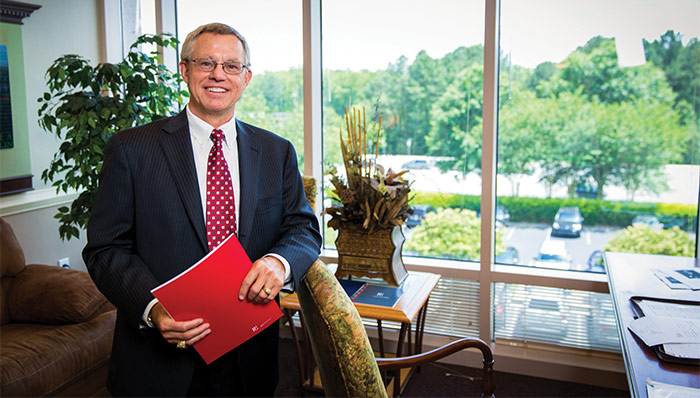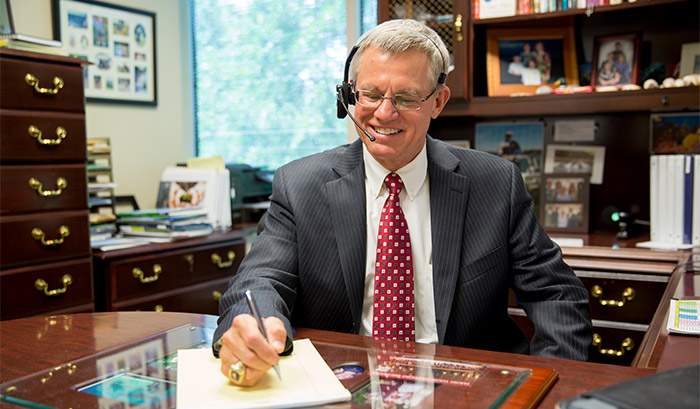Tried & true: Managing volatility and risk
Tried & true: Managing volatility and risk

Steve Miller • Alpharetta, GA
Steven A. Miller, Inc. • Transamerica Financial Advisors, Inc.
Steve Miller’s career in financial services began more than 20 years ago—long enough for him to have endured two major market downturns. Still, transitioning his practice to focus on volatility and risk-managed returns didn’t happen overnight.
Proactive Advisor Magazine: Steve, can you tell me a little about your current advisory practice?
I am an investment advisor representative and branch office manager for Transamerica Financial Advisors, Inc., Transamerica Financial Group Division, TFG, based in Alpharetta, Georgia, a suburb of Atlanta.
I work closely with my own client base on their financial and investment needs, but I also manage, ultimately, over 175 financial professionals across several different states. I have an excellent team of leaders in my organization who are essential to that management process.
When and how did you get started in the business?
I grew up on our family farm in Ohio and received an undergraduate degree in biology and later a master’s degree in real estate. As I was pursuing a couple of different career options after college, I first became a client of World Marketing Alliance Securities, WMAS, which became TFG. I was intrigued by the opportunity to help individuals and their families, so I transitioned into becoming a full-time representative in 1994. It also fit very well with the real estate and sales and marketing background I had acquired.

Have you seen many changes in the business since then?
A tremendous amount of change. Probably the two most important things relate to market volatility and the development of strategies to overcome that.
Could you explain that?
Since I started in the business, there have been two major market downturns, as we all know. The preparation and readiness for such an event has a much higher priority now than when I first started, which were fairly benign years until 2000. Sure, the markets have been performing well for the past four or five years, but that cannot last forever.
So the next part of the equation is how do we, as advisors, make sure our clients are prepared for the next downturn? When I started in the business, just about everyone was using a traditional asset-allocation model relying on “buy-and-hold” principles.
That is not the case anymore, at least in our practice. For our clients, but especially pre-retirees and those already in retirement, we are focused on risk management first. We collaboratively develop sound goals and objectives with our clients and a very specific risk profile.
From an investment perspective, how do you implement that?
We use active investment management and third-party managers. We want to make sure our clients have money managers involved who can bring the most sophisticated strategies and a constant market and strategy watch to the table. I am focused on serving my clients in a broad planning capacity and making sure the right strategies are in place, but active managers are the true experts when it comes to the implementation of that. They can help us analyze the specific risk orientation of each client and select strategies for the appropriate portfolio construction. Once the strategies are in place, they continually review and make adjustments as market conditions call for.
How did you transition your practice to active management?
Frankly, it was a pretty long process. It is hard to just leave traditional practices overnight. And I needed to make sure, in my own fashion, that this was something well-validated and effective.
It is interesting that early in my career I had heard of an active manager who coincidentally was doing a terrific job for a relative of mine who had a rather sizable portfolio. Therefore, I was very interested when our firm introduced active management as a tool.
Some of my clients, including family members, were fully committed to active management. My wife was thrilled with the results she saw during the credit crisis and recession. While she was not in the green for that period, she was not down much, and, overall, she was in better shape to benefit from the eventual move back to a bull market for stocks and bonds. Of course, this may not be the case for all investors.

How do you explain active management to clients?
It all depends on their goals, risk profiles, and a more holistic look at where they want to be in the future. And it also depends on how we might construct their overall financial strategy between insurance products, annuities, and other forms of investments. But even with several annuity options, active management can be incorporated as part of the product advantageously to help with underlying asset growth and, subsequently, with potentially higher income streams in the future.
I use active management for clients of all sizes, down to relatively small portfolios. Risk management is not just reserved for the most affluent any more, nor should it be. I explain to all clients, if the ship appears to be going down, do you want to be sitting on the deck in a new chair or heading for a new ship?
Hopefully we will not see anything like 2008 any time soon, but we are prepared. And active management is not just for distressed markets, which is sometimes misunderstood. Active managers are skilled in all types of market environments and attempt to protect against market loss and take advantage of market gains.
Thank you, Steve. Any final thoughts on your overall investment philosophy?
Between my own clients and those managed within my organization, we play an important role in the overall financial health of quite a few people and their families. We take that responsibility very seriously.
I approach financial and investment planning from a risk-first perspective. It is all about managing volatility and risk-managed returns. I do not try and “sell” on the idea of promising a certain level of unrealistically high returns to new or prospective clients. I do emphasize preservation of capital and using third-party managers to capture reasonable future returns over time. To me, that is the essence of developing a mutually beneficial relationship with clients—sound money management enhances and deepens that relationship.
Disclosure: Steve Miller is a registered representative and an investment advisor representative with Transamerica Financial Advisors, Inc. Securities and investment advisory services offered through Transamerica Financial Advisors, Inc. (TFA), Transamerica Financial Group Division—Member FINRA, SIPC, and registered investment advisor. Non-securities products and services are not offered through TFA.
Photography by Chris Hamilton

